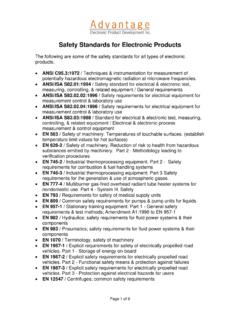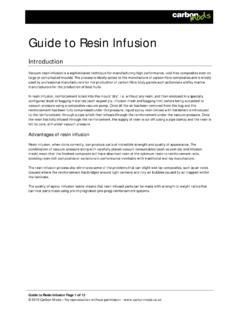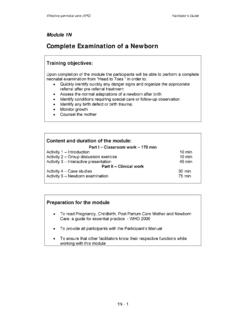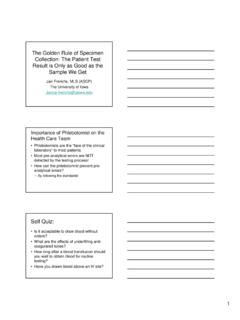Transcription of CLARITY Protocol 043013
1 CLARITY Protocol 4/30/13. Kwanghun Chung1,2; Jenelle Wallace1; Sung-yon Kim1; Sandhiya Kalyanasundaram2; Aaron Andalman1,2; Tom J. Davidson1,2; Julie Mirzabekov1; Kelly A. Zalocusky1,2; Joanna Mattis1; Aleksandra K. Denisin1; Sally Pak1; Viviana Gradinaru2; Hannah Bernstein1; Logan Grosenick1; Charu Ramakrishnan1; and Karl Deisseroth1,2,3,4*. 1. Department of Bioengineering 2. CNC Program 3. Department of Psychiatry and Behavioral Sciences 4. Howard Hughes Medical Institute Stanford University, Stanford, CA, HYDROGEL SOLUTION PREPARATION. 1. Combine and mix the following with special attention to temperature and safety precautions. Keep all components on ice at all times to prevent polymerization. Caution: paraformaldehyde (PFA) is an irritant, sensitizer, carcinogen and toxin. Acrylamide is a potent neurotoxin, a respiratory and skin sensitizer, carcinogen, irritant, mutagen, teratogen and reproductive hazard.
2 Many of the chemical constituents of hydrogels which could be used for CLARITY would fall into one or more of these categories. Therefore, to avoid skin contact or inhalation of monomers and/or crosslinkers ( acrylamide or PFA), solution preparation and all subsequent handling of hydrogel solution and polymer must be conducted in a fume hood with personal protective equipment (PPE). including face shield, lab coat, gloves, and closed-toe shoes. For 400mL of Hydrogel Monomer Solution: Ingredient Add: Final Concentration Acrylamide (40%) 40 mL 4%. Bis (2%) 10 mL VA-044 Initiator 1g 10X PBS 40 mL 1X. 16% PFA 100 mL 4%. dH2O 210 mL - Saponin (optional) 200 mg Total Volume 400 mL. Saponin is a widely-used mild non-ionic surfactant often used to permeabilize cellular membranes in conventional immunohistochemistry. In CLARITY , saponin can be employed in the hydrogel monomer infusion process to facilitate diffusion of the hydrogel monomer and initiator into the tissue, particularly for samples in which cardiac perfusion is not feasible, such as postmortem human tissues and zebrafish brains.
3 Saponin shortens incubation time required in the hydrogel monomer infusion process. However, bubbles may form that could be linked to saponin use, so routine saponin is not suggested. 2. Distribute 40 mL aliquots into 50 mL conical tubes on ice. Each tissue sample will require the use of one 40mL tube: 20 mL for perfusion and the remaining 20 mL for sample embedding. 3. Seal tubes tightly and keep in secondary containment (on ice) before removing them from the hood. Transfer aliquots from ice to -20 C. Store these solutions at -20 C until they are ready to be used. They can be stored at -20 C indefinitely if all components were kept sufficiently cold during the preparation process. CLEARING SOLUTION PREPARATION. 1. To avoid skin contact or inhalation, prepare solution in a fume hood in proper PPE. Paying special attention to safety, combine water, boric acid, and Sodium Dodecyl Sulfate (SDS) while stirring.
4 Add NaOH until the pH has reached This solution can be made, stored, and used at room temperature. Caution: SDS is a toxin and irritant to the skin and respiratory system. For 10L of Clearing Solution: Ingredient Add: Final Concentration Boric Acid 200mM. Sodium Dodecyl Sulfate 400g 4%. dH2O Fill to 10 L - NaOH To pH - Total Volume 10L. TRANSCARDIAL PERFUSION WITH HYDROGEL SOLUTION. 1. Prior to perfusing, thaw the frozen hydrogel monomer solution in the refrigerator or on ice. 2. When the solution is completely thawed and transparent (but still ice cold), gently invert to mix. Make sure that there is no precipitate, and avoid introducing any bubbles into the solution. 3. Prepare perfusion materials within a fume hood. 4. Deeply anesthetize adult mouse with Beuthanasia-D. 5. Perfuse the animal transcardially first with 20 mL of ice cold 1X PBS and then 20 mL of the ice cold hydrogel solution.
5 Maintain a slow rate of perfusion (about 2 minutes for the 20 mL of each solution). 6. Immediately place the tissue ( brain) in 20 mL of cold hydrogel solution in a 50 mL conical tube. Keep the sample in solution on ice until it can be moved to a 4 C refrigerator. 7. Cover sample in aluminum foil if it contains fluorophores, and incubate at 4 C for 2-3 days to allow for further diffusion of the hydrogel solution into the tissue. HYDROGEL TISSUE EMBEDDING. 1. De-gas the 50 mL conical tube containing your sample in a desiccation chamber (in a fume hood) to replace all of the gas in the tube with nitrogen (as oxygen impedes hydrogel formation), as follows: a. Place the 50 mL conical tube on a rack in the desiccation chamber. b. Twist the 50 mL conical tube open sufficiently to allow gas exchange. c. Turn on the nitrogen tank and adjust the control valve such that the inlet to the desiccation chamber fills with nitrogen gas.
6 D. Switch the desiccation chamber valve from nitrogen gas flow to the vacuum. e. Turn on the vacuum pump. Verify that the chamber is under full vacuum by testing the chamber lid. Keep vacuum on for 10 minutes. f. Switch the vacuum off and slowly turn the valve to fill the chamber with nitrogen gas. g. Carefully open the chamber just enough to reach the tubes while purging with nitrogen gas. Taking great care to minimize exposure to air, and quickly and tightly close the sample tube. 2. Submerge the tube in 37 C water bath in a 37 C room or incubator on the rotator. Incubate for 3. hours or until solution has polymerized. 3. In a fume hood, extract the embedded sample from the gel (carefully take the sample out and remove extra gel pieces with gloved fingers). Hydrogel waste disposal should be conducted in accordance with all institutional, state and country regulations for hydrogel monomers and crosslinkers ( acrylamide and PFA).
7 4. Wash the sample with 50mL of clearing solution for 24 hours at room temperature to dialyze out extra PFA, initiator, and monomer. Wash the sample two more times with 50ml for 24 hours each at 37 C. to further reduce residual PFA, initiator, and monomer. Take care to dispose of this waste solution carefully as a biohazard. ELECTROPHORETIC TISSUE CLEARING (ETC). 1. Construct the ETC chamber as described (separate document). a. Place the sample in the chamber. b. Circulate the clearing solution through the chamber using the temperature controlled water circulator, with 10-60V applied across the tissue ( brain) at 37-50 C for several days to clear the sample. The clearing process is faster at higher voltage and temperature, but requires more power, limiting the number of clearing setups simultaneously operable by one power supply (typical power output maximum, 300W). For example, four setups can be run simultaneously at 37 C and 30V, whereas only 2 setups can be run at 50 C.
8 And 60V, so circulator temperature and voltage should be chosen to meet practical considerations. 2. After several days, wash the sample two times with of PBST ( TritonX in 1X PBS) twice for 24 hours each. PREPARING THE SAMPLE FOR IMAGING. 1. Incubate the sample in FocusClear or 80% glycerol solution for 2 days before imaging; these have refractive indices matching that of CLARITY -cleared tissue. Ensure there is sufficient solution surrounding the sample, and that evaporative losses do not occur. Protect the sample from light. 2. Take a clean glass slide and gently place it on a dust-free surface. 3. Take a small piece of BluTack putty and prepare constant-diameter worm-shapes using gloved hands. Make the thickness uniform and about the thickness of the sample ( if the sample is 1 mm, make the putty tube diameter mm). 4. Place two tubes of putty horizontally across the vertical slide, leaving space in between for the tissue sample.
9 Cut excess putty that protrudes off the slide. 5. Using a spatula, carefully take the sample and place it between the putty tubes in the middle of the slide. Pipette ~20 l of FocusClear medium on top of the sample. 6. Carefully place a Willco dish (with the lipped side facing up) on top of the putty tubes. Press down on the glass part of the dish (keeping fingers over the putty to avoid glass shattering). carefully and slowly until contact is made with the sample and FocusClear medium. Ensure that there are no bubbles between the sample, medium, slide, and dish. 7. Now using a P200 pipette, carefully introduce more FocusClear to either side of the sealed chamber (from the liquid that surrounded the sample for incubation as it has been optically matched). Take great care not to introduce any bubbles. 8. Now that the whole chamber is filled with FocusClear, use PDMS sealant (Kwik-Sil) across both vertical openings between the putty, dish, and slide to fully seal the chamber and prevent evaporation.
10 9. Place aluminum foil on top of the chamber and place it on a level surface (shielded from light to minimize photodamage). Leave the sample for 10-15 minutes to allow the PDMS sealant to polymerize fully. 10. Preparation is now ready for imaging.




